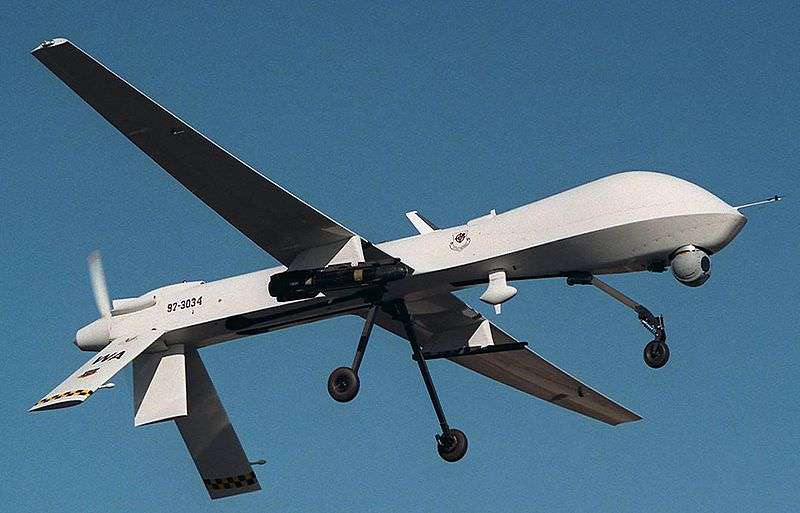DHS Domestic Drones Designed To Snoop on Guns, Communications

Not that Big Brother robots will ever come swooping across the sky, sniffing out people carrying guns and locating people by their mobile devices, but just in case there was ever a need for such a thing, the Department of Homeland Security is building such capabilities into its domestically deployed drones. For now, drones that can identify people toting rifles, sniff out cell phone conversations and (potentially) launch weapons are primarily deployed at the border, but they're getting quite a workout in the heartland, too, reports CNet's Declan McCullagh.
The U.S. Department of Homeland Security has customized its Predator drones, originally built for overseas military operations, to carry out at-home surveillance tasks that have civil libertarians worried: identifying civilians carrying guns and tracking their cell phones, government documents show.
The documents provide more details about the surveillance capabilities of the department's unmanned Predator B drones, which are primarily used to patrol the United States' northern and southern borders but have been pressed into service on behalf of a growing number of law enforcement agencies including the FBI, the Secret Service, the Texas Rangers, and local police.
CNet links to unredacted DHS requirements for domestic Predator drones, which provide some interesting details on the device's abilities and their potential uses.
Of interest to Second Amendment fans, of course, is the idea of robots in the sky spotting and marking the location of anybody carrying a rifle or a shotgun (a holstered pistol would seem to be a stretch for the technology — at least, so far). That's not an uncommon activity in much of the country, and the idea of eager Homeland Security goons bouncing across forest and desert in pursuit of some poor SOB out to bag a rabbit or plink a few tin cans is less than assuring to many people.
3.5.3.1.7 Shall be capable of identifying a standing human being at night as likely armed or not (based on position of arms) at a slant range of one and a half times the specified Operating Altitude.
The requirements also lay out the wish list for the drones' abilities to intercept communications and target the source of signals. The abilities are specified by bandwidth, and a quick cross-check with what devices use which parts of the spectrum reveal that, yes, indeed, pretty much any widget you may care to carry and talk, text or email through is covered.
3.5.5 Signals Interception
3.5.5.1.1 Shall (T) provide 360-degree coverage in azimuth of the spectrum from 30 MHz to 3 GHz unblocked.3.5.5.1.2 The payload shall provide 2 degree (T) 1 degree (O) root mean square (RMS) direction finding (DF) accuracy from 30 MHz to 150 MHz and provide 1 degree (T) 1/2 degree (O) root mean square (RMS) direction finding (DF) accuracy from 150 MHz to 3000 MHz.
DHS originally acquired the drones for border patrol purposes, but a 2012 report (PDF) from the DHS Office of the Inspector General revealed that Customs and Border Protection has been loaning its toys to agencies including:
- Department of Homeland Security (DHS) agencies, including Office of Border Patrol, United States Secret Service, Federal Emergency Management Agency (FEMA), and Immigration and Customs Enforcement (ICE);
- Bureau of Land Management;
- Federal Bureau of Investigation;
- Department of Defense;
- Texas Rangers;
- United States Forest Service; and
- National Oceanic and Atmospheric Administration (NOAA).
Those loans take place with sufficient frequency that the report frets that CBP "does not have agreements with exterior stakeholders for reimbursement of mission costs."
Oh, yeah. I guess those Big Brother robots are swooping across the sky, after all.


Show Comments (112)